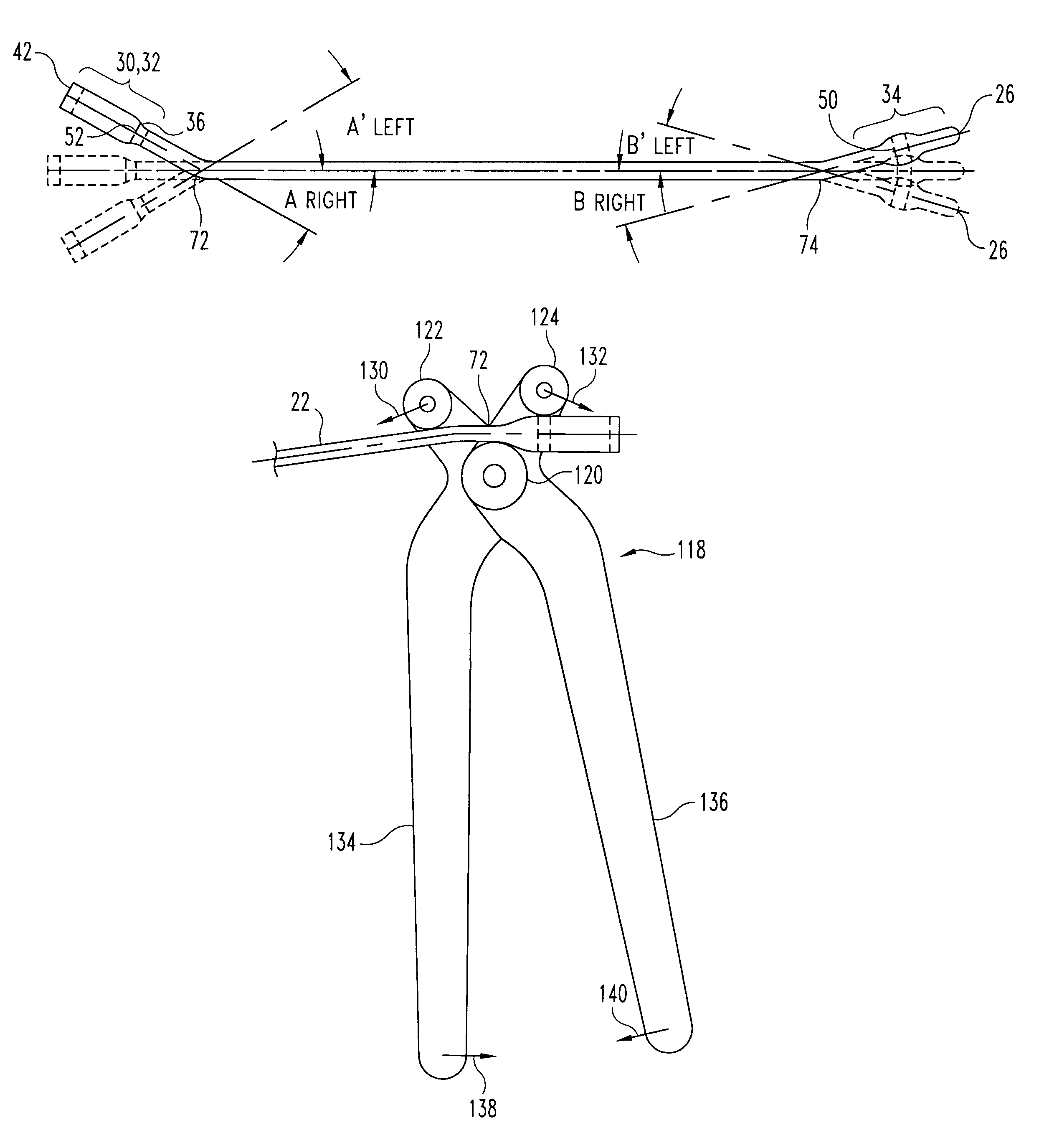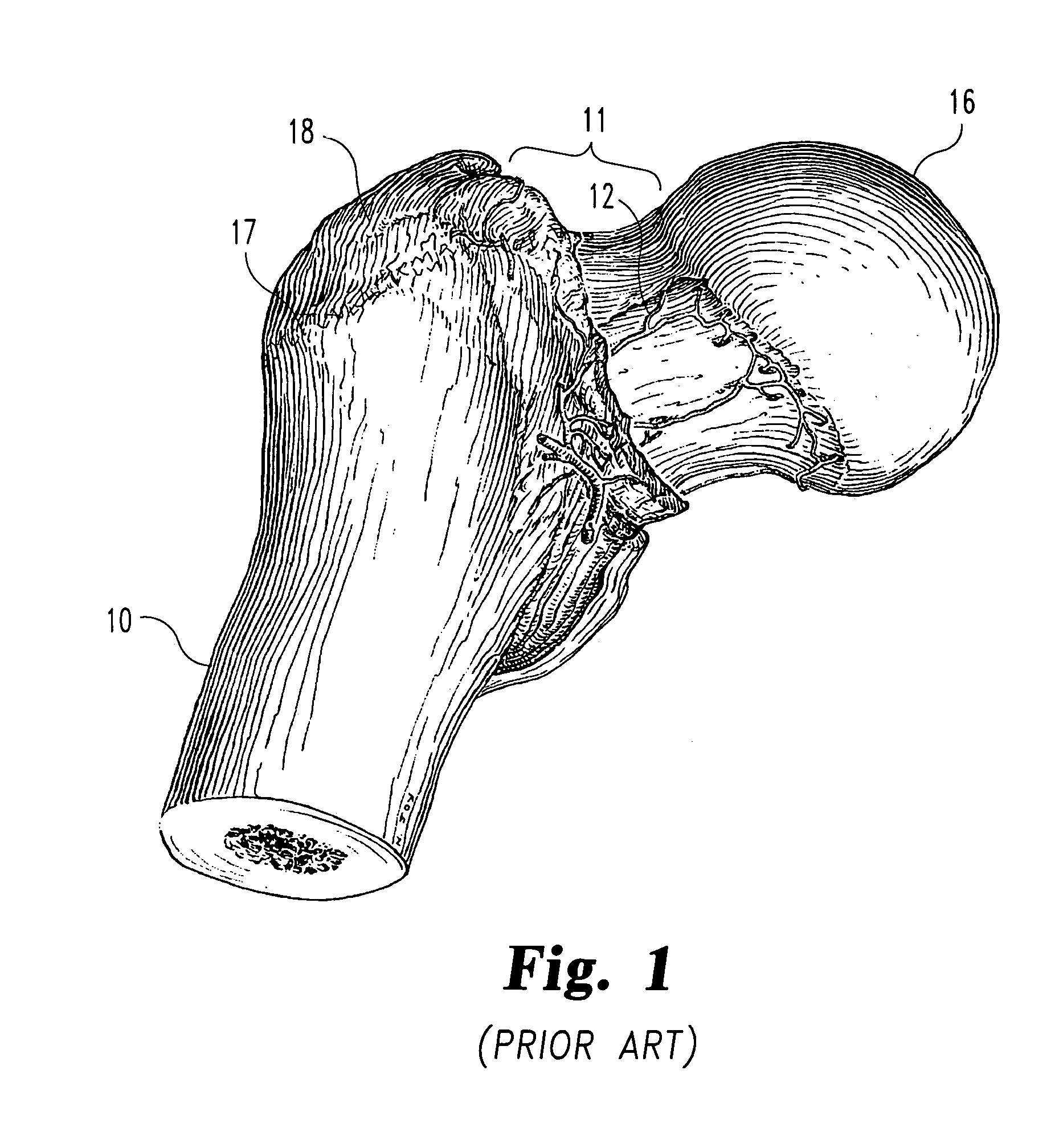Pediatric intramedullary nail and method
- Summary
- Abstract
- Description
- Claims
- Application Information
AI Technical Summary
Benefits of technology
Problems solved by technology
Method used
Image
Examples
Embodiment Construction
[0029]An exemplary intramedullary nail 20, as illustrated in FIGS. 2–4, comprises an elongate member 22. In an embodiment intended for use in a femur of a child or adolescent, typically ages 6–14, for example, the nail 20 is formed from titanium and has a generally cylindrical shape with a diameter along a solid central section 24 of between 4 mm and 7 mm, although this is not intended as a limitation. Central section 24 should have a certain amount of elastic flexibility to permit accurate placement within the femoral canal as discussed below. Such elastic flexibility, which permits some flexure during movement and weight bearing activity, confers an additional benefit in that it has been found to stimulate bone healing. The nail 20 preferably ends in a rounded, smooth and tapered distal tip 26.
[0030]The nail 20 has two widened sections or fastener receiving areas 28, 30 in respective proximal and distal end sections 32, 34. Each fastener receiving area 28, 30 is formed with an inc...
PUM
 Login to View More
Login to View More Abstract
Description
Claims
Application Information
 Login to View More
Login to View More - R&D
- Intellectual Property
- Life Sciences
- Materials
- Tech Scout
- Unparalleled Data Quality
- Higher Quality Content
- 60% Fewer Hallucinations
Browse by: Latest US Patents, China's latest patents, Technical Efficacy Thesaurus, Application Domain, Technology Topic, Popular Technical Reports.
© 2025 PatSnap. All rights reserved.Legal|Privacy policy|Modern Slavery Act Transparency Statement|Sitemap|About US| Contact US: help@patsnap.com



